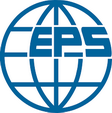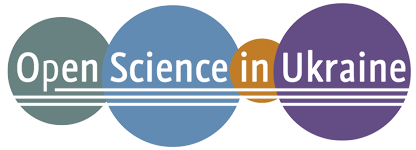Isothermal section of the Gd-Mn-Ge ternary system at 1070 K
DOI:
https://doi.org/10.15330/pcss.26.1.140-145Keywords:
Intermetallics, ternary system, Phase equilibria, Crystal structureAbstract
Interaction between the components in the Gd–Mn–Ge ternary system was studied at 1070 K over the whole concentration range using scanning electron microscopy, energy dispersive X-ray microanalysis and X-ray diffractometry. At 1070 K Gd–Mn–Ge system is characterized by existence of six ternary compounds: GdMn4Ge2 (ZrFe4Si2 structure type, space group P42/mnm, a = 0.7645(4) nm, c=0.3953(3) nm), GdMnGe (TiNiSi structure type, space group Pnma, a=0.7129(2), b=0.4166(2), c=0.8201(2) nm), Gd3Mn4Ge4 (Gd3Cu4Ge4 structure type, space group Immm, a=1.4023(4), b=0.7121(3), c=0.4212(3) nm), GdMn2Ge2 (CeAl2Ga2 structure type, space group I4/mmm, a=0.40326(6), c=1.0884(2) nm), GdMn6Ge6 (MgFe6Ge6 structure type, space group P6/mmm, a = 0.52377(5), c = 0.8182(1) nm) and GdMn1-хGe2 (CeNiSi2 structure type, space group Cmcm, a = 0.41612(8)-0.41590(7), b = 1.6123(3)-1.6119(1), c = 0.40336(8)-0.40290(6) nm). For the GdMn1-хGe2 compound the homogeneity range was determined (x=0.70-0.64).
References
J.H.V.J. Brabers, V.H.M. Duijn, F.R. de Boer, K.H.J. Buschow, Magnetic properties of rare-earth manganese compounds of the RMn6Ge6 type, J. Alloys Compd., 198, 127 (1993); https://doi.org/10.1016/0925-8388(93)90155-G.
P. Schobinger-Papamantellos, J.H.V.J. Brabers, K.H.J. Buschow, A neutron diffraction study of the magnetic ordering of HoMn6Ge6, J. Magn. Magn. Mater., 139, 119 (1995); https://doi.org/10.1016/0304-8853(95)90036-5.
P.S. Salamakha, O.L. Sologub, O.I. Bodak, Ternary rare-earth germanium systems, Handbook on the Physics and Chemistry of Rare Earths, Amsterdam, 27, 1 (1999).
M.B. Konyk, O.I. Bodak, Isothermal seсtion of the Ce‒Mn‒Ge ternary system at 670 K, J. Alloys Compd., 387, 243 (2005); https://doi.org/10.1016/j.jallcom.2004.06.084.
M.B. Konyk, L.P. Romaka, V.V. Romaka, R. Ya. Serkiz, Interaction of the components in Er−Mn−Ge ternary system at 870 K, Phys. Chem. Solid State, 13(4), 956 (2012).
М. Konyk, L. Romaka, А. Horyn, N. German, R. Serkiz, Y–Mn–Ge system at 870 K, Visnyk Lviv Univ. Ser. Chem., 56, 25 (2015).
T. Roisnel, J. Rodriguez-Carvajal, WinPLOTR: a Windows tool for powder diffraction patterns analysis, Mater. Sci. Forum, 378–381, 118 (2001); https://doi.org/10.4028/www.scientific.net/MSF.378-381.118.
T.B. Massalski, Binary Alloys Phase Diagrams, ASM International, Metals Park, Ohio (1990).
Y.S. Pukas, R.E. Gladyshevskii, Novel compound with Er3Ge4 crystal structure in the Gd-Ge system, Phys. Chem. Solid State, 8, 347 (2007).
A.G. Tharp, G.S. Smith, Q.C. Johnson, Structures of the rare earth germanides at or near equiatomic proportions, Acta Crystallogr., 20, 583 (1966); https://doi.org/10.1107/S0365110X66001294.
M. Francois, G. Venturini, B. Malaman, B. Roques, Nouveaux isotypes de CeNiSi2 dans les systèmes R-M-X (R= La-Lu, M= métaux des groupes 7 a 11 et X= Ge, Sn). I. Compositions et paramètres cristallins, J. less-Common Met., 160, 197 (1990); https://doi.org/10.1016/0022-5088(90)90381-S
G. Venturini, R. Welter, B. Malaman, Crystallographic data and magnetic properties of RT6Ge6 compounds (R= Sc, Y, Nd, Sm, Gd-Lu; T= Mn, Fe), J. Alloys Compd., 185, 99 (1992); https://doi.org/10.1016/0925-8388(92)90558-Q.
V. Klosek, A. Verniere, B. Ouladdiaf, B. Malaman, Crystal and magnetic structures of the R(= Y, Dy-Tm)MnGe compounds, J. Magn. Magn. Mater., 256, 69 (2003); https://doi.org/10.1016/S0304-8853(02)00383-9.
M.L. Fornasini, F. Merlo, A. Palenzona, M. Pani, Valency changes of ytterbium in YbMnGe and in the YbMnSi1-xGex pseudo-ternary system, J. Alloys Compd., 335, 120 (2002); https://doi.org/10.1016/S0925-8388(01)01825-4.
Downloads
Published
How to Cite
Issue
Section
License
Copyright (c) 2025 M. Konyk, L. Romaka, V.V. Romaka, Yu. Stadnyk

This work is licensed under a Creative Commons Attribution 3.0 Unported License.









